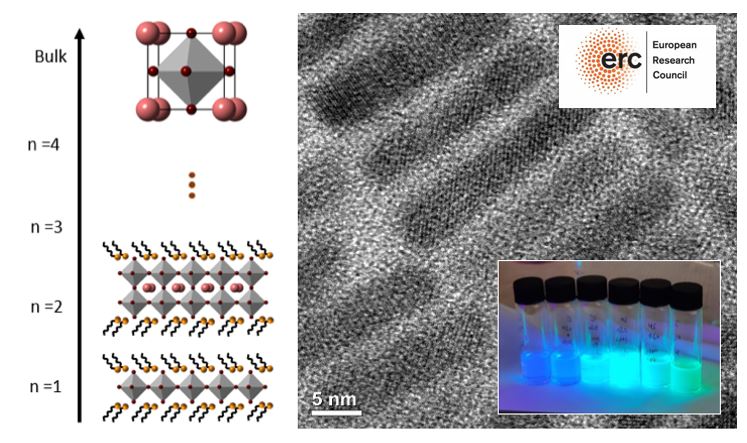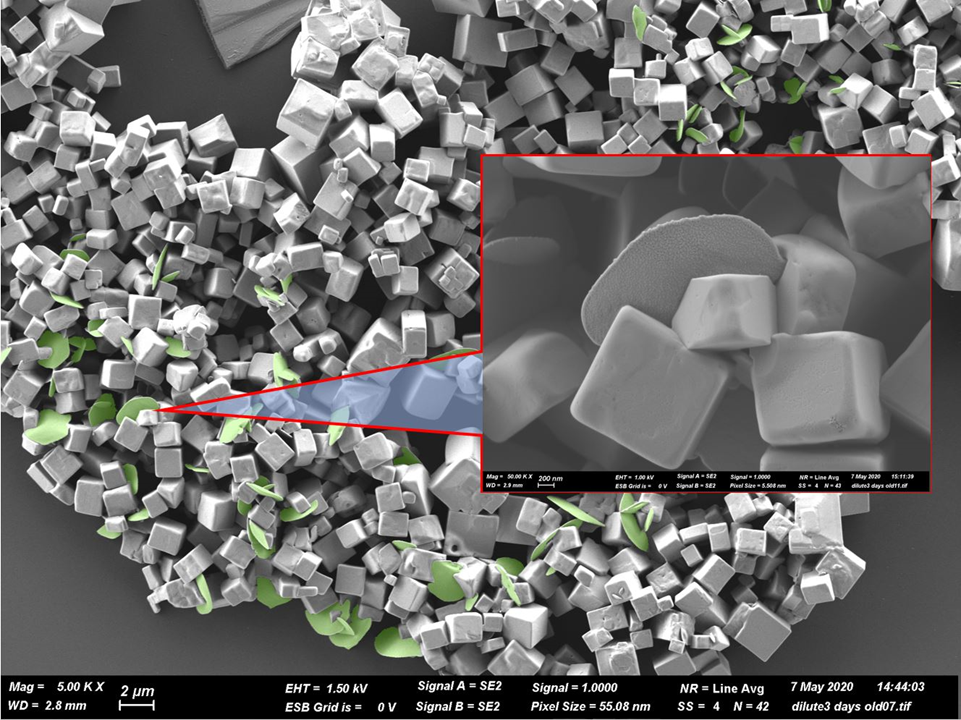Heteroplates
Heteroplates projects which is funded by the ERC starting grant is based on the ability we developed to make perovskite nanoplates with monolayer precision. (n is the number of monolayers which we can design to be 1-5 in the cartoon) Deterministic control over the thickness of a nanomaterial enables to control the bright emission from the nanoplates, once they are excited with UV-light. (the colorful image) This control is achieved through a quantum confinement effect of the exciton which is just a fancy way to say we basically conduct an experiment of a particle in a box. Where our nanoplate is the box and we can change its size. Using TEM characterization the thickness of nanoplates can be measured with atomic resolution.
Intermixing of phases
The highly emissive CsPbBr3 microcrystals are commonly accompanied with a non emissive Cs4PbBr6 phase. Here in the forms of fins (false colored in green) Inset shows up close one of the fins, which exhibits a rough topography, probably emissive perovskite cluster that keep baffling the community. A major challenge is to control the growth of such phases. For example, we try to understand why two fins grow in an almost perpendicular orientation. And how we can engineer more complex structures.
New materials and applications for single photon quantum emitters.
Currently, CsPbBr3 nanoparticles are at the focus of this study. Cooling samples to cryogenic temperatures reduces pohononic decoherence and broadening effects. Reveling their electronic structure and complex properties of absorption and emission of light. The combination of nearfield optics, low temperature environment and ultrafast detectors with high sensitivity enable us to discover mechanisms relevant for the next quantum revolution.




